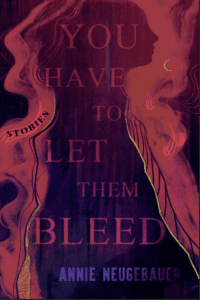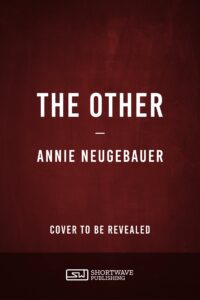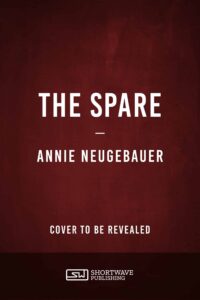Note: This essay was first published in the Horror Writers Association newsletter, in Marge Simon’s wonderful poetry column ‘Blood & Spades.’ Many thanks to Marge for inviting me to contribute and for allowing me to repost it here, so non-HWA members can read it too. I hope you enjoy!
Traditional Horror Poetry
Work the Form; Don’t Let the Form Work You
There’s a distinct bias against form poetry in today’s scene. In fact, many markets will specify “no traditional forms” or “no rhyming poetry” in their submission guidelines. Many critics or reviewers won’t touch it. Contests don’t take it seriously. And because of this, readers see less and less of it, and the younger generations write less and less of it.
The reasoning for the bias seems to be that “so many people do it poorly.” This is true. More than people who do free verse poorly? Not from what I’ve read. The difference lies in the fact that free verse, done poorly, hides its weakness more easily than form poetry done poorly, which shouts its weakness; a forced rhyme or sprung meter hits the ear far worse than a lazy, sentence-like line. Why is there so little quality form poetry being published today? I think that at least in part it’s because it’s not being taught, which is because it’s not being published, which is because there’s not enough quality work, which is because it’s not being taught.
I feel incredibly grateful for two things in the earliest years of my blossoming poethood: 1. Starting with the classics before working my way toward the contemporary poets, I had no idea there was such a bias against rhymed and form poetry. 2. I had a mentor right out of college (the wonderful Lewisville Poet Laureate J. Paul Holcomb) who taught me what many of the traditional forms are and challenged me to write them. Were my first attempts particularly earth-shattering? Probably not, though I do seem to have a natural knack for it, which I attribute to reading lots of rhymed poetry growing up (Thanks, Mom!). But ignorance is bliss, and I kept going, kept working and learning, and eventually I started producing high-quality work that was strong enough to get published despite the industry bias against it. By the time I realized how much so many people seem to hate it, I was already madly in love and doing good work, and there’s no turning back now.
I think the real trick to traditional forms is to think of them not as restrictions, but as tools that have the ability to unlock new effects one can’t achieve with free verse. You want to work the form to your advantage, not let the form work you. Of course much of this comes from being familiar with a broad range of forms. The scope of your idea, for example, will dictate whether it can fit into a haiku or a sestina. Likewise, how pithy or flowing do you want your lines? The brevity of a minute’s line is very different from the long-winded nature of blank verse. Then there are considerations of meter. Some people hate meter, period, but there are syllabic forms such as the englyn to play with, or even forms with no line length requirement at all such as the rondel. And there are forms with strict rhyme schemes, no rhyme schemes, and everything in between – and that’s not even getting into the anti-purist methodology of inventing your own forms or breaking the rules to make a form suit your needs!
In that regard, even free verse does, and perhaps should, come from a history and understanding of traditional form. Free verse should not be prose with line breaks; it should come from an awareness of poetic devices and formats, which include the broad range of forms. In fact, Billy Collins, notorious for his free-verse, has said that, “Any device that keeps a poem from falling into chaos is a form.” So indeed, whatever techniques give a free verse poem its poem-like qualities could even be considered a use of (if not adherence to) form. Even Mary Oliver, who rarely uses rhyme and almost never uses traditional forms, says, “A poem requires a design—a sense of orderliness. Part of our pleasure in the poem is that it is a well-made thing—it gives pleasure through the authority and sweetness of the language used in the way that it is used.”
A well-made thing, yes. I love that, don’t you? Perhaps part of the reason I admire form poetry is because it requires time and effort to do well.
Where then does horror collide with form? For me, the answer is very simple: exactly as with any other subject matter. I see no reason why dark poetry shouldn’t be given as much weight and time and effort as others. Perhaps one important consideration to keep in mind is the nature of rhyme and the perception of certain forms. Rhyme can strike the ear as playful and frivolous. It certainly doesn’t have to, but if a poet wants a poem to be serious, she should pay extra care to the nature of her rhyme. I personally enjoy some of my horror poetry with a little cheeky bite to it, as you can see in “The Centipede,” an ottava rima verse first published in the September 2011 issue of Underneath the Juniper Tree:
The Centipede
The centipede, he crawls along the floor,
in search of unsuspecting human flesh,
and not the bravest person can ignore
that many-legged and segmented wretch—
a monster from the whispered magic lore
about a creature that can bend and stretch
as if his body knew not earthly rules…
like that of vampires, goblins, ghosts, or ghouls.
I happen to like the sense of almost giddy relish that the rhyme gives this particular poem, so I embraced it, and by the end of the poem I had something really fun. Rhyme also has one very powerful advantage over free-verse (which I love equally, for the record): rhyme is primal. Our brains are hard-wired for it, so when that rhyme finally drops it’s incredibly pleasing to the ear. We seek it, and it becomes a vehicle of meaning almost aside from the content of the words. T.S. Eliot said, “Genuine poetry can communicate before it is understood.” Rhyme is a wonderful example of that, I think.
One interesting thing that can be done with rhyme is subversion. For this reason, the rondeau has become my all-time favorite traditional form. When one listens (or reads) a rondeau, expecting that rhyme, and is met instead with a lack, that unexpectedness, too, can be powerful. The rondeau takes a word or phrase from its first line and uses it as a refrain at the ends of the second and third strophes, which I find an incredibly pleasing subversion of expectation – with some repetition still there to please the ear and make the poem feel complete. Here’s an example: “Still, It Pulls Me” is a rondeau first published in New Myths Issue 27 in June 2014:
Still, It Pulls Me
The darkness pulled me, in those years—
delicious taste of sacred fears,
to satiate my appetite
for all things roaming in the night
with ghostly garb and toothy sneers.
Window through which the monster peers,
or gloomy path on which he nears,
for me did equally delight…
the darkness pulled me.
The blackened stain of bloody smears
revealed, once all the carnage clears—
it drew me like a moth to light—
inspired me to start to write
of lunacy and her sharp shears…
the darkness pulled me.
I certainly don’t propose that every poet become a traditionalist, or even that every poet publish rhymed or form poems, but I do think it’s incredibly valuable for poets to study what forms have to offer, whether those forms be historic, invented, or simply theoretical. Their use has given me some of my favorite dark poems, and I hope you’ve enjoyed them as well.
Share this:





That T.S. Eliot quote is fantastic! And I enjoyed revisiting “The Centipede” and “Still, It Pulls Me”. Traditional form poetry certainly does that have that extra special thing–or things–that speak to you on a primal level. Not just rhyme, but also the order of it, even if it is not a readily apparent pattern. My brain likes patterns. 🙂 I need to try my hand at a traditional form poem–I love traditional forms, I adore the idea of rhythm and meter, and play with them a little in my free verse, but…it usually takes me so long to try to fit something into a form, that I give up. Maybe I’ll try an idea out in a traditional form from the beginning and see where that gets me.
I love that quote too! It’s one of my faves. And thank you, sweet lady, for your support. <3 I agree; people are designed to seek patterns. It's always pleasing when they're actually there for us to find. I have no doubt you can write some great form poetry. I think you're onto something with "from the beginning" vs. "trying to fit something in." There's a huge difference! I mean, that's a fun experiment too, but harder, I think. I usually let the form take me wherever it wants to go, which is more difficult if I have a preconceived idea of where I want the poem to end, know what I mean?
It’s wonderful that you had a mentor who helped you in the beginning. All of us need support so badly. Without it we’re like flowers in a closet — blooming and withering in the dark, alone. Keep writing your wonderful form poetry! 🙂
Aw, thank you, Lexa! It really is wonderful. I lucked into a great group and a great mentor at the perfect time; I don’t know what I would’ve done without them.
I write mostly traditional though I do try and experiment here and there. Very thought provoking!! Your poems are fantastic as usual!!
Thanks so much, Traci!
You’re welcome!!